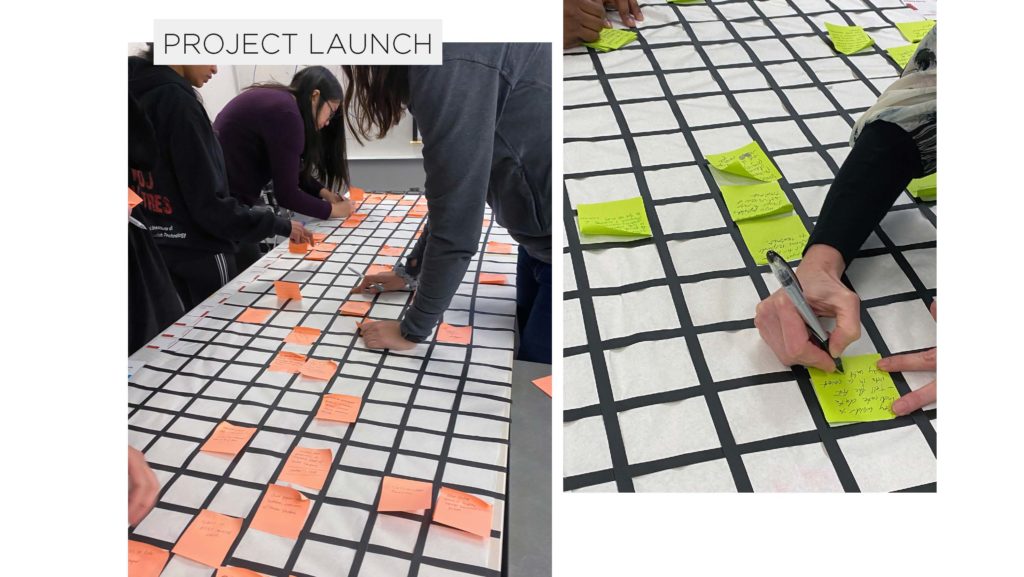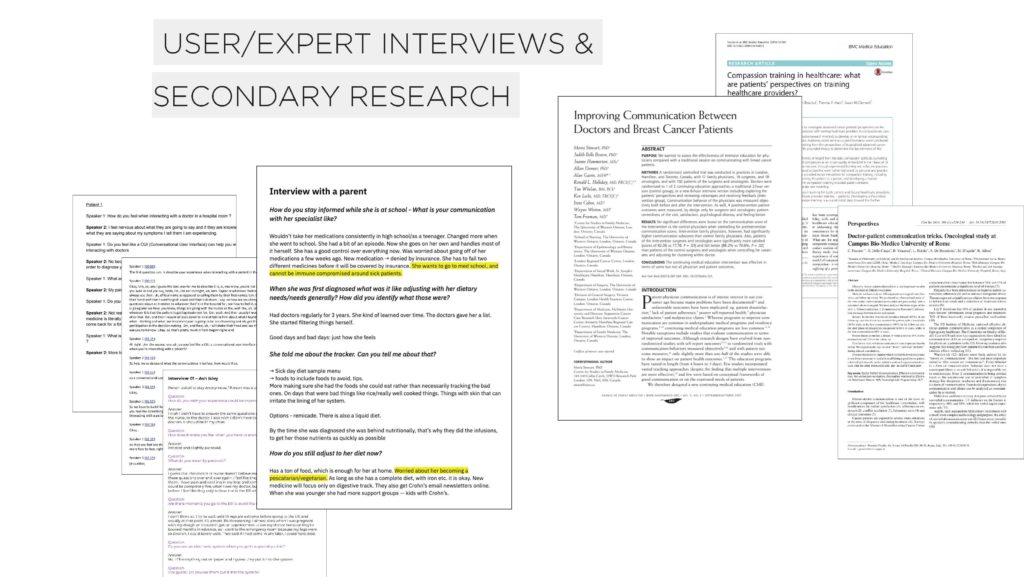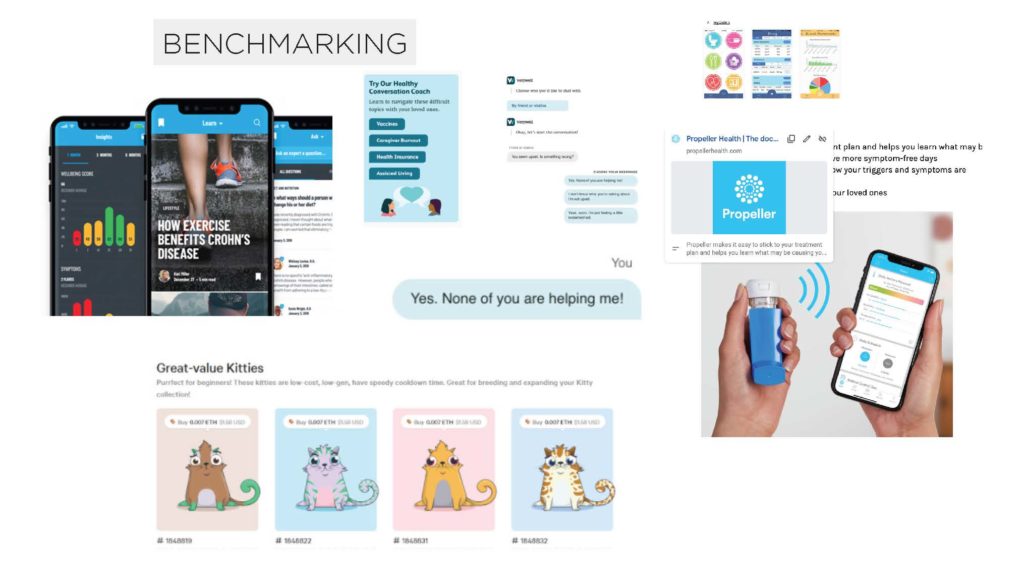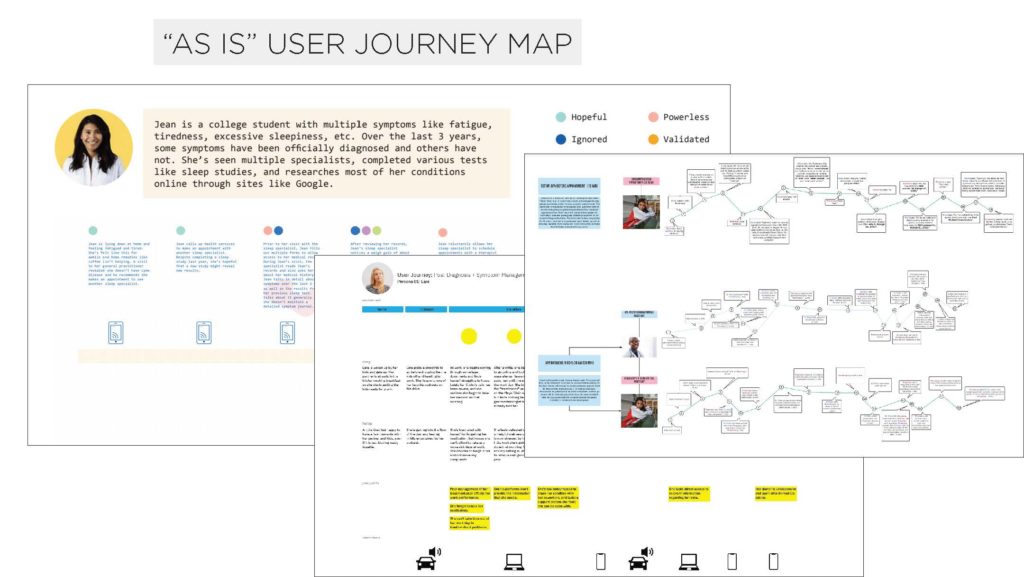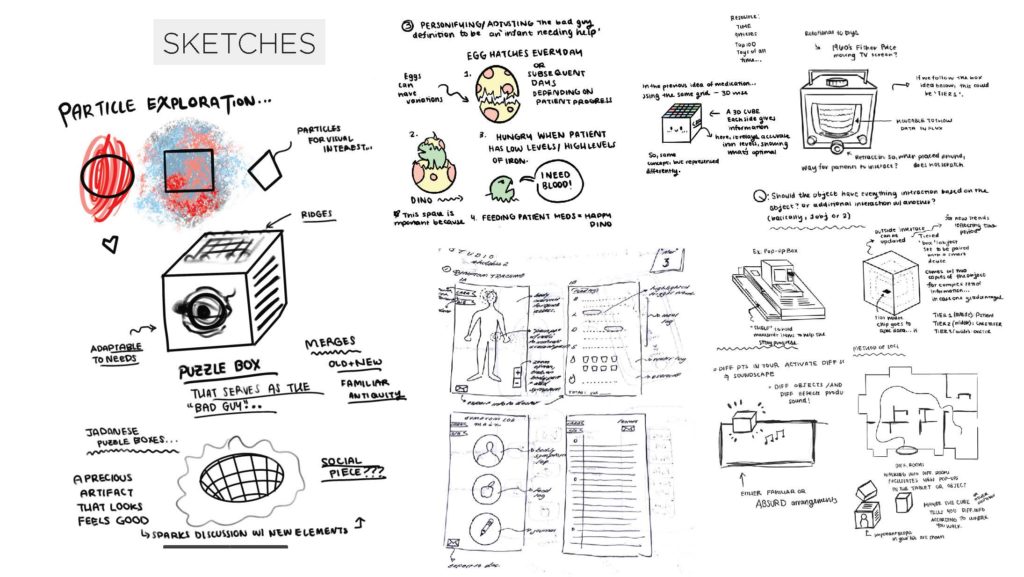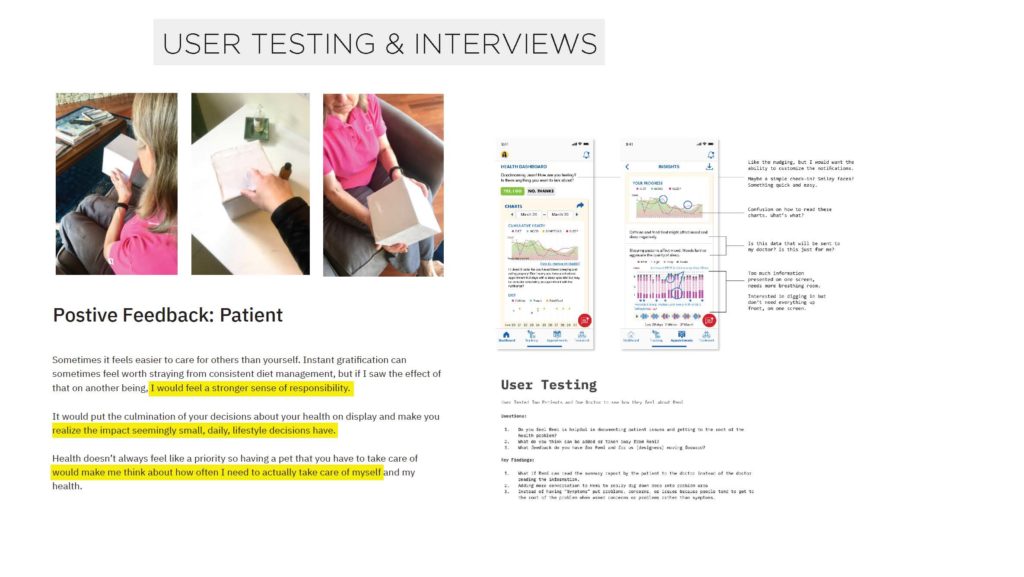Our Research Question
How might an interface harness machine learning to enable a patient to understand and act upon their own healthcare data?
This project looks ahead to a day when patients own and control their own healthcare data via a single, secure, comprehensive access point. IBM is experimenting with using blockchain to secure this data. Watson capabilities might include recommendation systems, textual analysis, etc. Secondary consideration: how might the patient interact with data in natural, intuitive ways (not just point and click charts and lists?)
Over the course of the semester our MGD studio collaborated with a team at IBM Watson Health, led by Debi Ndindjock, to find out.
Key Questions to Consider:
- How might an interface harness ML to provide the patient with ownership and agency in relation to their healthcare data?
- What does it mean to create an interface that is useful, usable and desirable to a certain individual, in a particular context, in a specific moment in time?
- What privacy issues are at stake? How might the experience support ethical data use?
- What issues of trust are at stake? How might the experience establish (and earn) patient trust?
- How might the interface value human difference, addressing user pain points through a customized, adaptive experience?
Scenario Videos of Student Work
Student Designers: Isabel Bo-Linn, Syashi Gupta, Maddy Kelly
Student Designers: Eryn Pierce, Jack Ratterree, Gloria Jing
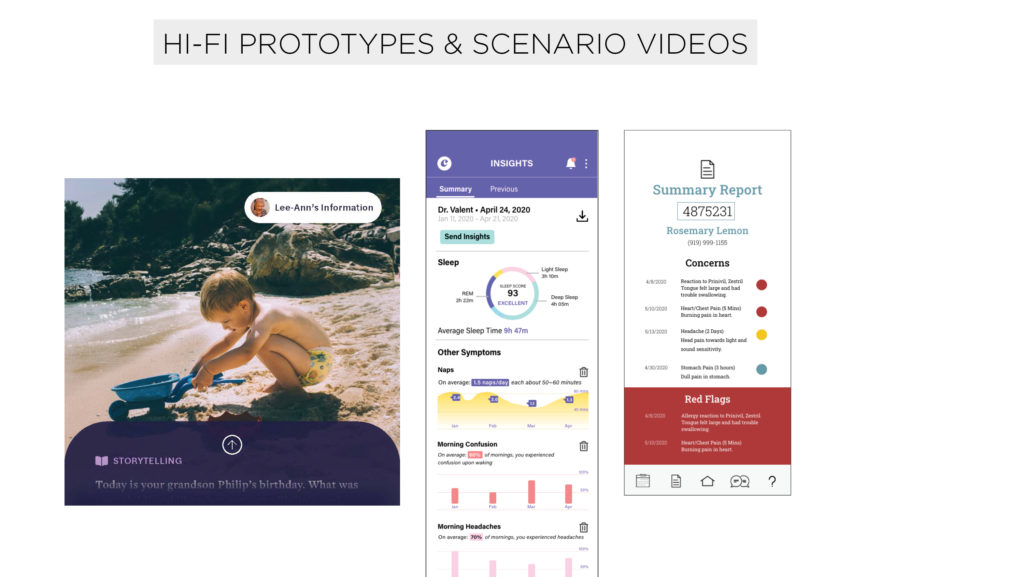
The Research Process
